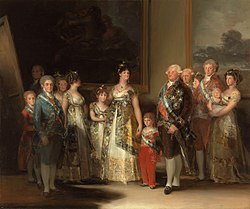Naturalism (arts)
Also see Realism (art movement)
Naturalism in art refers to the depiction of realistic objects in a natural setting. The Realist movement of the 19th century supportednaturalism in reaction to the stylized and idealized depictions of subjects of Romanticism, but many painters have used a similar approach over the centuries. One example of Naturalism is the artwork of the American artist William Bliss Baker, whose landscape paintings are considered some of the best examples of the naturalist movement. Another example is the French artist Albert Charpin, from the Barbizon School, with his paintings of sheep in their natural settings.
Naturalism began in the early Renaissance and developed itself further throughout the Renaissance, such as with the Florentine School.
Naturalism is a type of art that pays attention to very accurate and precise details and portrays things as they are.
Controversies about terms
Some writers restrict the terms "Naturalism" and "Realism" for use as labels for period styles of the middle and late nineteenth century in Europe and America, thus making available the terms "naturalism" and "realism," all lowercase, for tendencies of art of any period whose the works strive for an accurate representation of the visible world. Thus, "Naturalism" is tied to a time and place, and "naturalism" is timeless and is a major turning point in art.
Naturalism (arts) Media
Eilif Peterssen Summer Night (1886)
Lord Leighton's Cimabue's Celebrated Madonna of 1853–55 is at the end of a long tradition of illusionism in painting, but is not Realist in the sense of Courbet's work of the same period.
Bas-de-page of the Baptism of Christ, "Hand G" (Jan van Eyck?), Turin–Milan Hours. An illusionistic work for c. 1425, with the dove of the Holy Ghost in the sky.
Woodcutting, miniature from a set of Labours of the Months by Simon Bening, c. 1550
Annibale Carracci, The Butcher's Shop, early 1580s
Late Gothic Pietà from Lubiąż in Lower Silesia, Poland, now in the National Museum in Warsaw
Sources
- Hauser, Arnold (1999). The Social History of Art: Naturalism, impressionism, the film age. Psychology Press. ISBN 0-415-19948-4.
- “History of Art: Study Guide 14th Century to the Present”. 18th Century Naturalism and The Enlightenment Era Natural Painting. 22 April 2011.









